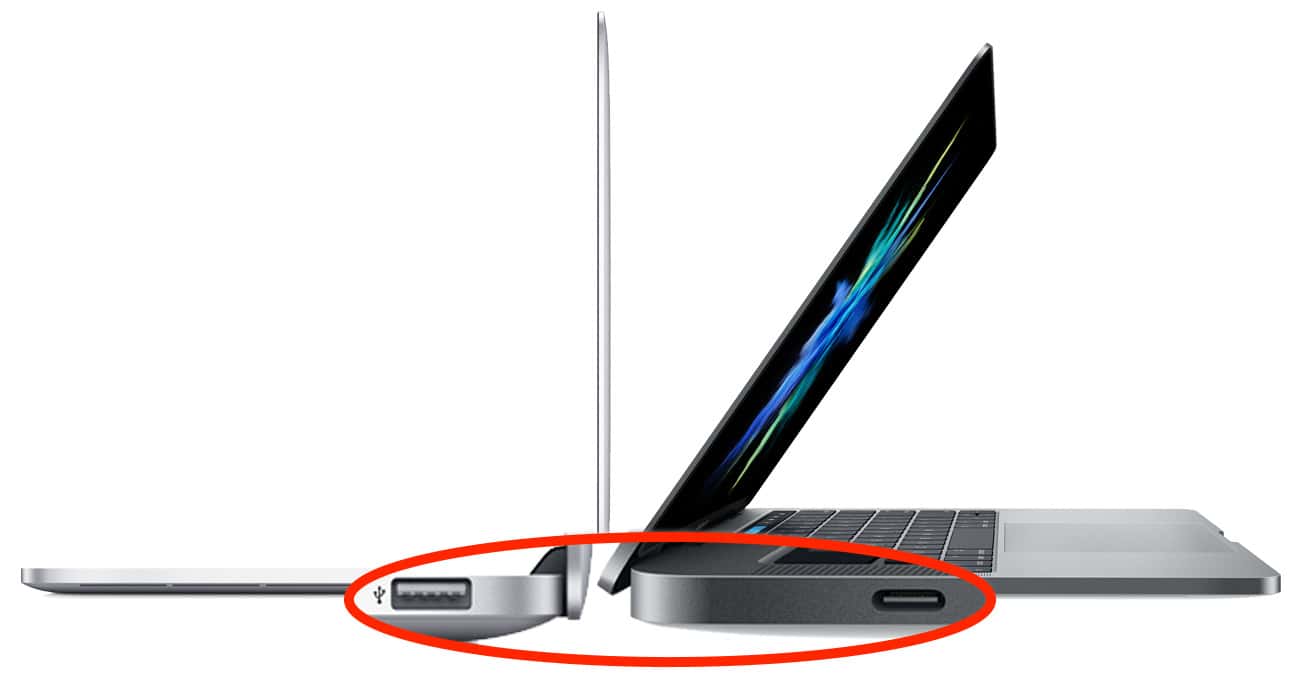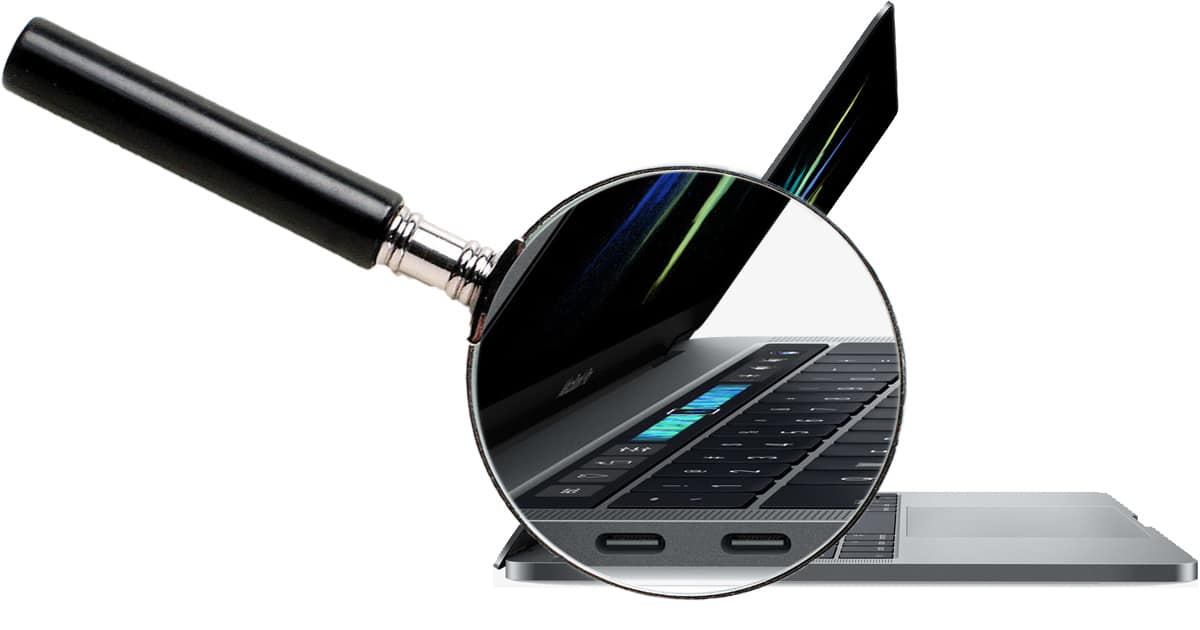The MacBook introduced USB-C to Apple’s laptop lineup in 2015, and the just announced Retina MacBook Pro with Touch Bar gives us Thunderbolt 3—which looks exactly like USB-C. Not sure what the differences are and how they affect you? Read on to learn more.
Understanding the USB Naming Mess
USB, or Universal Serial Bus, is kind of a complicated mess with loads of letters and numbers like A, B, and C, 1.1, 2.0, and 3. Then there’s mini and micro muddying up the list, too. Since mini and micro aren’t used on Apple’s computers, we won’t worry about those.
The letters tacked on the end of USB describe connector types. A, for example, is the flat rectangle port first introduced on the original iMac. B is the little house shape typically found on printers and other devices like USB microphones, and C is the thin flat slot with round ends.
What we don’t get from those letters is which protocols can pass through the connectors. For that we turn to the numbers. USB 1.0 is the oldest and slowest. USB 1.0 Low Speed transfered data at 1.5 Mbit/s and USB 1.0 Full Speed handled 12 Mbit/s speeds—painfully slow compared to later USB protocols.
USB 2.0 came along later with 480 Mbit/s transfer speeds, and USB 3.0 bumped that up to 5 Gbit/s. USB 3.1 takes that up to 10 Gbit/s. USB 3.0 is also known as USB 3.1 Gen 1, and USB 3.1 is USB 3.1 Gen 2, because the engineers behind these protocols clearly hate us with the fire of a thousand suns.
How USB Names and Protocols Fit Together
Now that we have USB ports and protocols under our belts it’s time to see how they fit together. Luckily, this is a lot easer than sorting out the protocols.
USB A—the flat USB connector we’re familiar with from almost two decades of Macs—can support USB 1.x, 2, and 3.x. Apple started phasing USB 3 into the Mac lineup in 2012, and earlier models support USB 2.0. Older USB versions are supported, too, so a USB 3 Mac also supports USB 2 and 1, and a USB 2 Mac also supports USB 1.
UBS-C connectors support USB 3.1 (or USB 3.1 Gen 2, for those engineers who want to make our eyes bleed) and earlier, but they can also support other protocols, too. That’s where Thunderbolt 3 comes in.
Thunderbolt 3 and USB-C
Thunderbolt 3 needs a way to connect to your Mac, and the port type it uses just so happens to be USB-C. Remember, the “C” designates a connector type, not the protocols that pass through it.
Along with Thunderbolt 3, The USB-C connector also supports Thunderbolt 2, USB 3.1, USB 2, and USB 1 protocols. You can also pass DisplayPort, HDMI, and Ethernet through USB-C if you have the right adapter dongle. That makes USB-C sort of like the One Ring to Rule Them All of device connectors because it can be used for pretty much everything.

Power to the Ports
USB-C is also designed to handle some serious power—enough to charge your laptop. That means the same port that sends data to your external hard drives, keyboard, and printer, also powers your laptop.
The upside is that USB-C frees up space by being thinner and more versatile. The downside is that it means MagSafe power connectors are a thing of the past. Seeing MagSafe go kind of sucks because it’s been an awesome way to keep our Macs from flying off coffee shop tables when someone snags the charger power cord with their foot.
USB-C or Thunderbolt…Which is on My Mac?
USB-C ports look exactly the same if they support just USB protocols, or USB and Thunderbolt. If you plug a USB device into a USB-C port it’ll just work, but plug a Thunderbolt device into a USB-C port that supports only USB protocols and nothing happens.
Here’s how that breaks down for Apple’s laptop lineup today: The MacBook includes a single USB-C port that support USB 3.1 and earlier. The Retina MacBook Pro with Touch Bar USB-C ports support USB 3.1 and earlier along with Thunderbolt 3 and earlier. This is one of those situations where you just have to know which protocols your Mac supports because there aren’t any clever visual cues to give you a hint.
That said, plugging a Thunderbolt device into a USB-only USB-C port isn’t going to blow up anything—but you’ll still want to know what your Mac supports before you rush out and start buying peripherals.
And those engineers who came up with this crazy letter and number scheme for USB? Seriously. What did we ever do to them?

Hi Jeff.
I just want to sort this out. I have a MacBook Pro and a MacBook at home and would like to have one dock connected to a monitor. Do I have this correct that if I had a USB-C dock like (ie. OWC) that both devices would be able to use the dock (seperately of course)? but if I bought a thunderbolt 3 dock (ie. owc’s latest offering) only the MacBook Pro could use it? Or could the MacBook use a TB3 dock just at limited USB-c speeds and functionality?
Cheers
Hello Ashylee and sorry for the late reply. If the MacBook only supports USB-C, it won’t see the Thunderbolt dock at all.
Lee, there is one for USB-C connecters, Griffin makes one:
https://griffintechnology.com/us/products/cables/usb-c-cables/breaksafe-magnetic-usb-c-power-cable
BTW I guess this means that my Thunderbold 2/display port Ethernet adapter, I use to connect my MacBook Air now, will be as useful in the time to come as my SCSI and FireWire stuff. Or is there a cheap adapter? I saw a $ 49 one, but then it is cheaper to buy a new Ethernet adapter.
It certainly was a good idea, and worked in either orientation. Could someone come up with a dongle that has a similar magnetic breakaway?